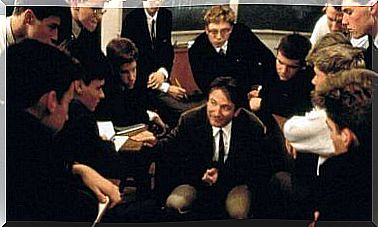The Cognitive Load Theory Of John Sweller

John Sweller’s cognitive load theory suggests that learning takes place best under conditions that align with human cognitive architecture. Although not precisely known, the structure of human cognitive architecture is discernible through experimental research.
Cognitive load is related to the amount of information that working memory can store simultaneously. Sweller says working memory has a limited capacity. Thus, the instructional methods should avoid overloading it with additional activities. These do not actually contribute directly to learning.
Sweller has constructed a theory that treats the patterns or combinations of elements as the cognitive structures that form the basis of an individual’s knowledge. He did so after validating the information processing research done by George Miller. This shows that short-term memory is limited with respect to the number of elements it can contain simultaneously.
John Sweller claimed that the instructional scheme could be applied to reduce cognitive load in students. Much later, other researchers developed a way to measure perceived mental exertion, which is indicative of cognitive load.
One of the important points of John Sweller’s cognitive load theory is that heavy cognitive load can have negative effects on the completion of a task. She also emphasizes that the experience of cognitive load is different from one person to another. For example, older people, students, and children experience different and greater amounts of cognitive load.

John Sweller’s cognitive load theory
For cognitive psychology, cognitive load is the effort used in working memory. Sweller created this theory to provide standards to aid in the presentation of information. Its goal was to develop student activities that optimize intellectual performance.
Thus, this author considers that the contents of long-term memory are “sophisticated structures that allow us to perceive, think and solve problems”, instead of a group of memorized data. These structures, which are called schemas, allow us to combine several elements into one. Schemas are therefore the cognitive structures that form the basis of knowledge. They are acquired during a lifetime of learning and other patterns can compose them.
The difference between an expert and a novice is that a novice has not acquired the schematics of an expert. Learning requires a change in the schematic structures of long-term memory. It is demonstrated by the performance, which is progressive. The change in achievement occurs because as we become more familiar with the material, the cognitive characteristics associated with it change so that working memory can handle them more effectively.
In order for pattern acquisition to occur, one must fashion the instruction to reduce the load on working memory. John Sweller’s Cognitive Load Theory deals with techniques to reduce the load on working memory. The aim is to facilitate the changes associated with the acquisition of patterns in long-term memory.
Principles of John Sweller’s Cognitive Load Theory
The specific recommendations for creating the instructional materials that John Sweller offers in his Cognitive Load Theory include:
- Change the methods of problem solving through the use of problems without objectives or solved examples. The aim is to avoid means and ends that impose a heavy working memory load.
- Eliminate the working memory load associated with the need to mentally integrate multiple sources of information. This is done through the physical integration of these sources.
- Eliminate the working memory load associated with unnecessary repetitive information processing by reducing redundancy.
- Increase the capacity of working memory by using auditory and visual information in condition. These two sources of information are essential – and not redundant – for understanding.
Key points of cognitive load theory
As we have seen, cognitive load theory is an instructional creation theory. It reflects our cognitive architecture or the way we process information. During learning, information must remain in working memory until it has been sufficiently processed to pass into long-term memory.
Cognitive load theory makes learning more efficient using training methods. These methods include:
- Assessment of experience and adaptation of instruction.
- Reducing the space of problems by dividing them into parts and using the partially completed problems and the solved examples.
- The fusion of multiple sources of visual information.
- Amplification of working memory capacity through the use of visual and auditory channels.

Knowledge and critical thinking
One idea suggested by cognitive load theory is that “knowing things” is necessary in order to think critically about these things. It also suggests that two of the main information processing activities (knowledge acquisition and problem solving) should be considered separately. We need to focus on the diagram first and then on problem solving.
Thus, Sweller suggests ” that ‘ an important reason for the ineffectiveness of problem solving as learning device is that the cognitive processes required by both activities overlap sufficiently. Conventional problem solving in the form of means and ends analysis requires a relatively large amount of cognitive processing capacity. This is therefore not available for the acquisition of diagrams ”.
In other words, the reason problem solving and domain knowledge is not directly proportional is related to how the human brain works. Problem solving occupies “crucial brain bandwidth”. This has important implications for how teachers can create lessons, units, and assessments.










